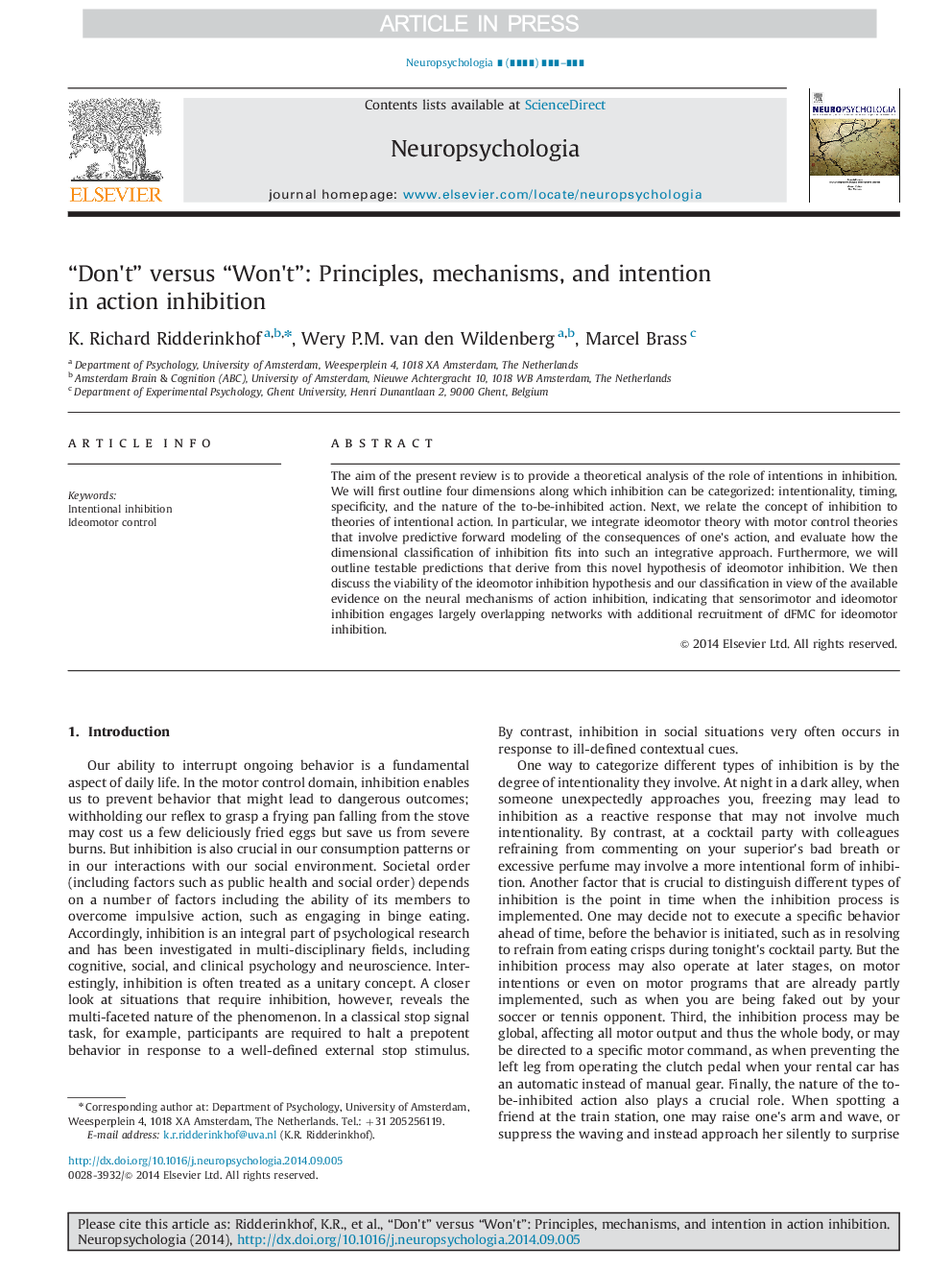| Article ID | Journal | Published Year | Pages | File Type |
|---|---|---|---|---|
| 7320835 | Neuropsychologia | 2014 | 8 Pages |
Abstract
The aim of the present review is to provide a theoretical analysis of the role of intentions in inhibition. We will first outline four dimensions along which inhibition can be categorized: intentionality, timing, specificity, and the nature of the to-be-inhibited action. Next, we relate the concept of inhibition to theories of intentional action. In particular, we integrate ideomotor theory with motor control theories that involve predictive forward modeling of the consequences of one׳s action, and evaluate how the dimensional classification of inhibition fits into such an integrative approach. Furthermore, we will outline testable predictions that derive from this novel hypothesis of ideomotor inhibition. We then discuss the viability of the ideomotor inhibition hypothesis and our classification in view of the available evidence on the neural mechanisms of action inhibition, indicating that sensorimotor and ideomotor inhibition engages largely overlapping networks with additional recruitment of dFMC for ideomotor inhibition.
Keywords
Related Topics
Life Sciences
Neuroscience
Behavioral Neuroscience
Authors
K. Richard Ridderinkhof, Wery P.M. van den Wildenberg, Marcel Brass,
